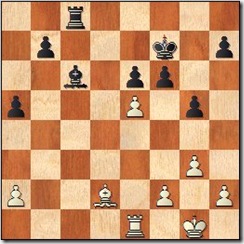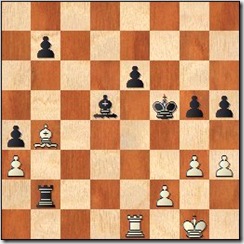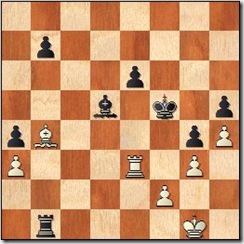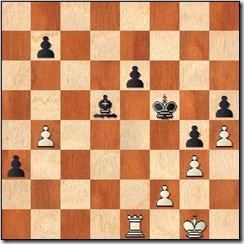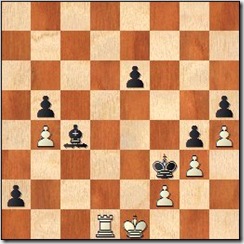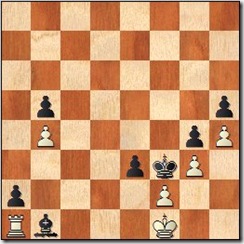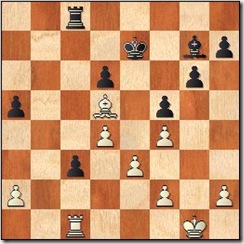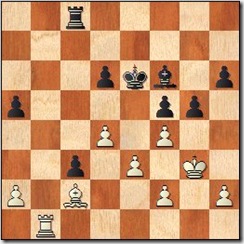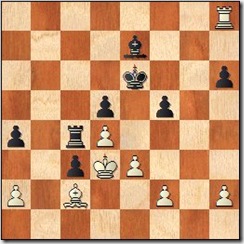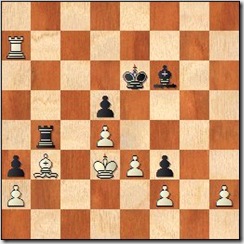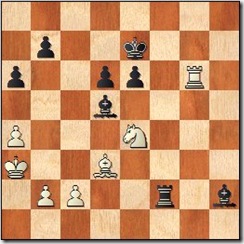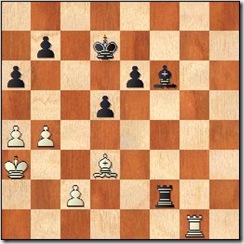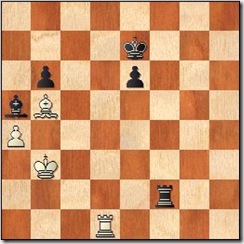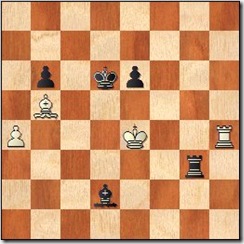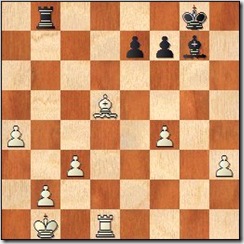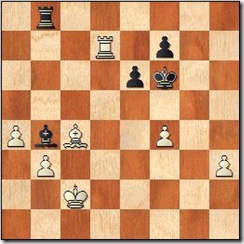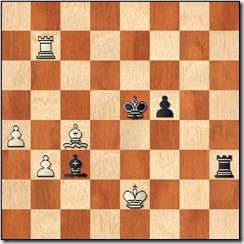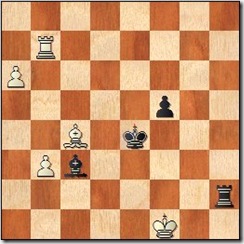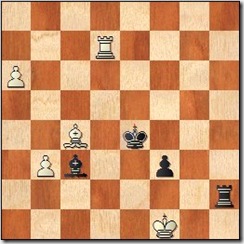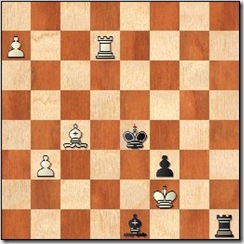 White to move. Can he save the game?
White to move. Can he save the game?
Watch the video to see the solution. White’s worse (objectively – he’s losing) and my only chance is to capture on f4 with the bishop, so that I can stop the `h` pawn, and so that `f` pawn does not become too dangerous as well.
However, that does not work immediately: 47. Bxf4? Kxf4 48. g6 Bxf3 49. g7 Bd5 -+ blocking the pawn. But White has a study-like way to make this idea work, and in the game I managed to find the right move order.
Black, an International Master, did not find the way around the position, and the game ended as a draw. Looking at it now, 7 years later, I realized that Black was still winning, but this draw is still nonetheless one of my better efforts when it comes to saving lost positions. This was somewhat inspired by my article about endgames with bishops of opposite colour, and in particular – the Kotov-Botvinnik game.
PS. This is likely my last blog post for the 2009. Happy new year and best wishes for 2010!











